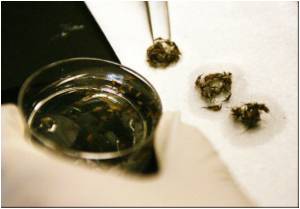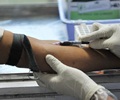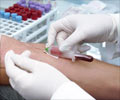US scientists have identified a fat enzyme link to hepatitis C virus (HCV). This discovery may offer a new strategy for treating the infection.

“Our results reveal a potential ‘Achilles heel’ for HCV infection,” said Melanie Ott, MD, PhD, senior author on the study. “Several DGAT1 inhibitors are already in early clinical trials to treat obesity-associated diseases. They might also work against HCV.”
At first glance, the HCV lifecycle is fairly simple. The virus enters the cell. One large protein is produced and cut into several smaller viral enzymes and proteins that build the virus. The RNA genome is copied, and the new RNAs and structural proteins are used to make new virus particles that are released into the blood stream for to infect more cells. These processes were thought to occur at specialized membranes inside the cell. However, recently it has been shown that fat droplets are critically involved.
Fat droplets, which store fat in cells, have become a hot new topic in biology. DGAT1 is one of the enzymes that help to form fat droplets. The Gladstone team, led by Eva Herker, PhD, discovered that HCV infection and viral particle production are severely impaired in liver cells that lack DGAT1 activity.
“DGAT enzymes produce the fat that is stored in the droplets that are important for HCV replication, so we wondered if inhibiting those enzymes might disrupt the viral life cycle,” said Dr. Herker. “We found that HCV specifically relies on one DGAT enzymes, DGAT1. When we inhibit DGAT1 with a drug, the liver still produces fat droplets through another DGAT enzyme but these droplets cannot be used by HCV.”
The team sought to identify which step in the HCV lifecycle requires DGAT1. They found that DGAT1 interacts with one viral protein, the viral nucleocapsid core protein, required for viral particle assembly. The core protein normally associates with the surface of fat droplets but cannot do so when DGAT1 is inhibited or missing in infected cells.
Advertisement
Charles Harris, Robert V. Farese, Jr. and Katrin Kaehlcke were part of the Gladstone team. Celine Hernadez, Arnaud Charpentier and Arielle Rosenberg supported the research from the Universite Paris Descartes.
Advertisement
Source-Medindia












